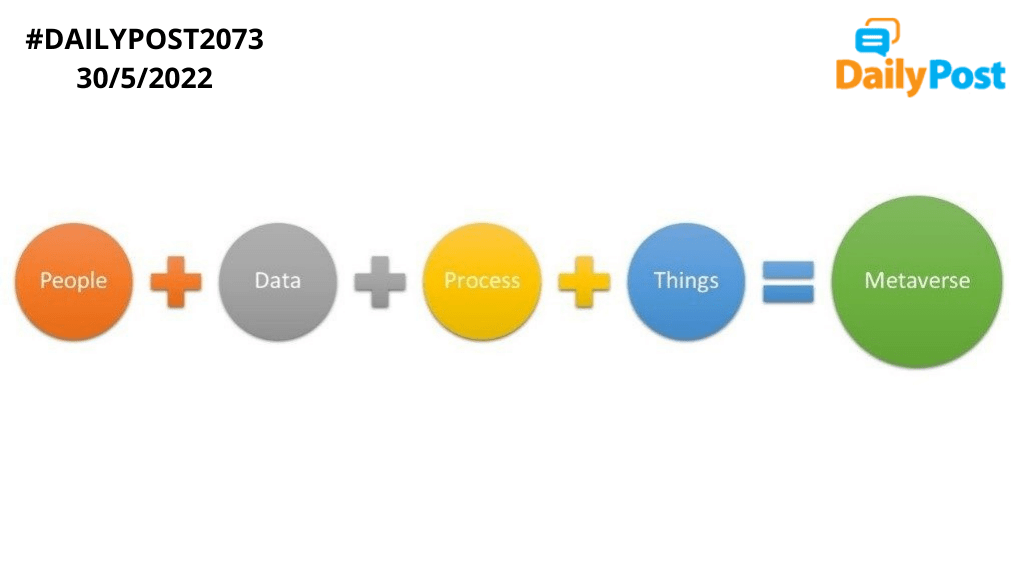DailyPost 2073
METAVERSE’S FOUR MAIN PILLARS
The metaverse can be called Beyond Universe, a world which could have been called dystopia only till recently. The COVID-19 infused digital transformation seems to have opened the floodgates for a total business and technological transformation, never ever seen in history. This would bring into convergence most of the technologies, currently propelling our digital and business world. They would move to the next phase at scale, moving from 2D to 3D, persistence being the bedrock, interoperability being the norm, where ownership of various types inclusive of data becoming the predominant characteristics of the Metaverse age. Meta is defined at the world of avatars in the same setting that the normal world provides. Coming from the gaming tech thought process, we are barely at the cusp of the nascent Metaverse Age.
How is this age different from anything else seen in the era of Web1 or Web2? It would be radically different but suffice to say that it would be built on technologies, which have proven in their world in siloes, and have been around in bits and pieces, they would be brought together to stitch a different world. The four main building blocks of the Metaverse would be, first and foremost, what we can call as WebMe. This is the centrality of the individual in Metaverse. Putting the Me in Metaverse. Web3 is an effort to build a ”distributed” layer to the internet. ”Digital wallets like MetaMask, Trust Wallet, and Fortmatic are raising new possibilities for what data people can possess, how and where it’s stored and the ways it gets shared with others.
The next component is what we can call as the Programmable Word. The planet would be personalized so to say for our needs. In 1982 NASA used an early iteration of Digital Twins to simulate the rescue scenarios for the stranded Apollo 13 mission. Scenario modelling is what we are aiming at, in a big way. In 2013 MIT researchers developed the first iteration of M-Blocks, self assembling robots. In 2016 Microsoft released its augmented reality headset and ”in 2020 UC Davis neurosurgeons used mixed reality headsets to prepare for surgery on conjoined twins.” Full stack programmability across the connected, experiential and material layers is the aim. If this were to happen, companies need to start working from today itself. Metaverse would be what we make out of it, from the emerging trends of the day.
The next trend to be captured and worked upon for its success, is to make Synthetic, Authentic. Way back in 1966, MIT’s Eliza, an early NLP program, was the first capable to attempt a Turing Test. In 1997 we had Deep Blue, in 2014 we had the first article on Generative Adversarial Networks, while in 2020 OpenAI’s GPT-3 could write articles, difficult to differentiate from human centered work. Is it authentic is the question than is it real, the tenets being; provenance, policy, people and purpose. The last critical pillar of the internet for Metaverse to happen, is computing the impossible. Moore’s law has taken care of the doubling compute since 1965. 1Qbit was founded in 2012 as the first dedicated quantum software company and in 2020 distributed computing project Folding@home broke the exascale threshold. Chips are reaching amazing capabilities, HPC, and someday sooner than later quantum computing, will be the gamechangers.
METAVERSE IS AN OPEN CHALLENGE TO TECH OF ALL TYPES TO MAKE IT HAPPEN AND BE COMMERCIALLY VIABLE AND INCLUSIVE.
Sanjay Sahay

